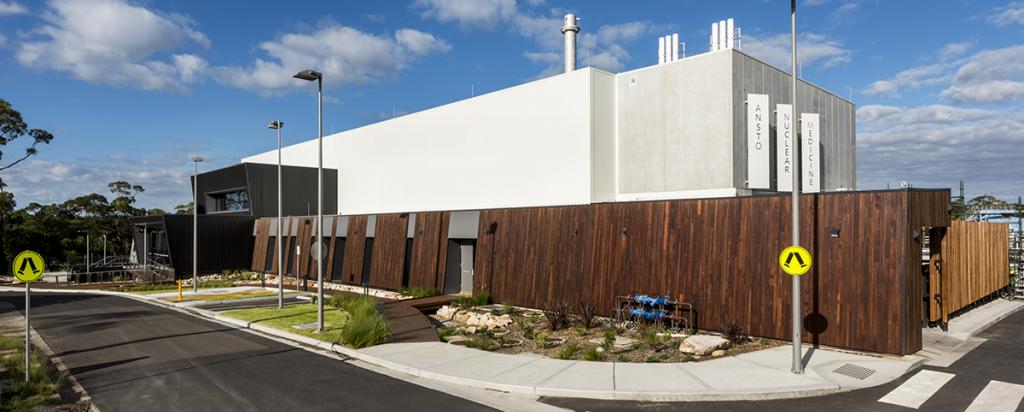
FAQs on the Mo-99 Manufacturing Facility
What is molybdenum-99 (Mo-99) and technetium-99 (Tc-99m)?
Molybdenum-99 (Mo-99) is a radioisotope which is used in hospitals and medical centres to make technetium-99 (Tc-99m), the most widely-used radioisotope in nuclear medicine.
Tc-99m is used mainly for selective imaging of organs and soft tissues such as the lungs, bone, brain, liver and kidneys – enabling an effective diagnosis.
The Mo-99 is supplied to some 250 hospitals and medical centres in the region utilising an ANSTO-designed radiopharmaceutical generator, the Gentech® Generator, a shielded device which enables the radionuclide to safely undergo its radioactive decay to become Tc-99m, while in transit.
How much Mo-99 is needed in Australia?
In Australia alone, each year 550,000 people receive a diagnosis using Mo-99. This is produced at the Australian Nuclear Science and Technology Organisation (ANSTO) and distributed to more than 250 Australian and New Zealand hospitals and medical centres in the Gentech® Generator shielded containers.
What is the global demand for Mo-99?
World demand for Mo-99 is large and growing, as more countries develop modern medical systems. It is estimated that Mo-99 is used in 45 million procedures worldwide every year.
There are only a small number of reactors in the world used to produce Mo-99, and the reactors responsible for seventy per cent of the world’s current Mo-99 supply are due to cease production in the next few years. Currently most of the global Mo-99 supply is produced in reactors fuelled by highly enriched uranium. With medical modernisation in developing countries, global Mo-99 demand will continue to grow.
How does this project assist with nuclear non-proliferation?
Currently most of the world’s supply of Mo-99 is produced in ageing reactors fuelled by highly enriched uranium. The fact is highly enriched uranium can be used in nuclear weapons.
ANSTO’s OPAL reactor is one of the few reactors world-wide that uses low enriched uranium (LEU) fuel. In addition to this, ANSTO’s Mo-99 is produced from the irradiation of low enriched uranium target plates. The development of this facility significantly strengthens Australia’s position as an important contributor to global nuclear security and non-proliferation.
Why not just import Mo-99?
Sourcing Mo-99 or managing Mo-99 by-products internationally would be less reliable and more expensive due to a number of factors including:
- Reactor availability: Global supply of nuclear medicine is under threat with many of the world’s current reactors having recently been or due to be shut down in the next few years;
- Increasing demand: With medical modernisation in developing countries, global Mo-99 demand is increasing;
- Maintaining safety: The new ANSTO Synroc® waste treatment facility will showcase Australian innovation and manufacturing capability and improve international management of Mo-99 by-products.
When did new Mo-99 Manufacturing Facility commence operation?
ANSTO's new Mo-99 Manufacturing Facility commenced commercial operations in 2019.
Who built the new Mo-99 Manufacturing Facility?
In January 2014, Watpac Limited was awarded the contract to design and construct the new Mo-99 Manufacturing Facility at ANSTO.
Watpac is a listed national contractor with more than three decades of experience in delivering landmark buildings in Australia’s sports, health and science, defence, education, residential, commercial, retail and industrial sectors.
Read the full media announcement regarding the appointment
In November 2018 Watpac Limited were recognised with a Master Builders Association New South Wales 2018 Excellence in Construction Award for the facility.
When is the ANSTO Synroc® waste treatment facility expected to be operational?
Early construction of the facility is already underway, with commissioning scheduled to commence in late 2020, and full operation planned by 2025.